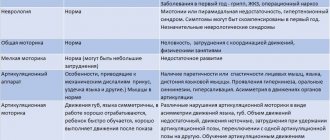Stuttering is a disorder in the rhythm, tempo, and fluency of speech.
The disease most often develops in childhood, between 2 and 6 years, affecting about 3% of children in the world. Boys suffer from stuttering 4 times more often than girls. The term has several synonyms: logoneurosis, logoclonia, laloneurosis. There is evidence confirming the presence of the disorder in the Egyptian pharaohs, the prophet Moses, and the philosopher Demosthenes. King Battus of Persia also suffered from logoneurosis, which is why the defect is also called battarism.
Mechanism of occurrence
It is not without reason that stuttering in children starts at an early age. During this period, children undergo active development of phrasal speech, which becomes especially vulnerable as an immature formation.
The mechanism of development of logoclonia begins with increased excitation of speech centers in the brain, the most important of which is Broca's center. The center is located in the frontal gyrus of the left hemisphere and is responsible for motor speech activity.
A change in the tone of speech centers leads to a disruption in the transmission of nerve impulses, affecting the area of verbal reproduction. A patient begins to stutter when muscle spasms of the larynx, tongue, lips, and pharynx occur. The work of the speech apparatus is disorganized: some elements fire earlier, others later than expected. The vocal cords are in hypertonicity, which is why they are compressed too tightly, or, conversely, are in a relaxed state.
As a result of respiratory spasms, the breathing rhythm is disrupted with a feeling of lack of air.
Such changes inevitably affect the patient’s speech: the smoothness of reproduction is lost, the rhythm is lost. The voice changes: it becomes drawn-out, and may disappear completely for a short time.
Convulsive speech activity does not appear immediately. The defect is preceded by characteristic signs. The baby becomes silent for several hours, even days, and then begins to speak with a stutter. Has difficulty before starting a conversation. Makes long pauses in speech. Repeats syllables and words at the beginning of a sentence several times, uses additional sounds.
Laloneurosis in childhood manifests itself in 3 forms:
- tonic;
- clonic;
- mixed.
Tonic logoneurosis is characterized by: pauses in speech, stretching of syllables: machine.
Clonic logoneurosis is characterized by the repetition of individual sounds: mm-m-m-machine. The mixed form combines the characteristics of both previous ones.
When children are upset, they usually develop fear and anxiety before starting a conversation. Unusual movements appear, the face is distorted with grimaces, and tics occur. Such manifestations are the patient’s unconscious attempt to cope with difficulties in pronunciation.
Among the character traits of a stutterer are:
- timidity, fear of talking in the presence of strangers;
- weakness of will;
- high impressionability;
- embarrassment in front of strangers;
- excessive fantasy.
Speech is one of the main ways of communication. The inability to fully own it causes various kinds of inconvenience. The formation of phobias is possible, among which social phobia is a frequently occurring fear of people. Being withdrawn from society sometimes leads to complete isolation.
Causes of stuttering
There is no consensus in the scientific community about the causes of stuttering. Various specialists in different eras adhered to their hypotheses on this issue. In the 16th century, a Spanish linguist put forward the following point of view: the defect occurs from the fact that an already matured baby sucks milk from the mother’s breast. To cure the disease, it is advisable to wean the child from the breast, forcing him to eat on his own.
In the 19th century, the scientist Lagusen suggested that logoclonia is caused by feelings of shame, anger, fear, and fear.
I.A. Sikorsky was the first to point out the occurrence of a defect in early childhood during the development of speech.
Modern science divides the causes of logoclonia into predisposing and provoking ones.
Predisposing factors form an impressive group. Among them:
1.
Age characteristics – 2–6 years, when speech is in the developmental stage, becoming vulnerable due to incomplete maturation. 2. Gender characteristics - boys are more likely to be affected by the disorder than girls. 3. damage to the central nervous system :
- pathological course of pregnancy - infections, fetal hypoxia;
- premature birth;
- birth injuries;
- asphyxia;
- prematurity;
- infectious diseases suffered in childhood - meningitis, encephalitis;
- measles, whooping cough, typhus, rickets, helminthic infestations, endocrine disorders;
- ENT diseases
- GM injuries – bruises, TBI.
4. Heredity . Inheritance from parents of features of the nervous system - hyperexcitability, acceleration of motor and speech activity. Inheritance can occur over several generations. Moreover, men who stutter have a lower risk of having offspring with this disorder than women who stutter. In men with the disorder, the likelihood of having sons with the defect is 20%, and daughters - 9%. For women: sons – 35%, daughters – 17%. 5. Features of speech development . At the time of the formation of phrasal speech, children are normally characterized by some deviations. Iterations may appear - repetition of syllables, sounds, emboli (sounds, words without meaning). This is normal because poor speech breathing limits the ability to speak ideally complete sentences. Problems begin when unfavorable environmental factors interfere with the development of speech activity.
Provoking factors for stuttering
Inducing factors of a defect are considered to be those that cause a disorder only under a “favorable” combination of circumstances and in the presence of predisposing causes. If the necessary conditions are not available, then provocateurs are not dangerous for the child.
Provoking factors include:
- acute psychological trauma, provoking a severe shock - an experience of horror, fear. Fear plays a special role. Positive emotions, along with negative ones, can also provoke logoneurosis;
- chronic psychological stress. Usually, chronic psychotraumatization is caused by an unfavorable atmosphere in the family or a bad relationship with the school teacher, since children spend a significant part of their time at school;
- false stuttering - imitation of relatives with a similar defect;
- retraining left-handed children;
- learning multiple languages at an early age. We are talking about foreign languages imposed on a child at 2-3 years old. During this period, children have poor command of their native language. Learning a foreign language puts additional stress on the child’s psyche, causing nervous strain;
- the same overvoltage can also be caused by gadgets that modern 2- and 3-year-old children are overly interested in;
- errors in the formation of speech - a large information load on the child, imposing on him material that is not age appropriate (abstract concepts, complex figures of speech).
Depending on the influencing factor, laloneurosis can be neurotic and neurosis-like.
Neurotic laloneurosis arises in conditions of psychotrauma. The nervous system of such children is characterized by increased emotionality and vulnerability. Children sleep poorly, are anxious, and impressionable. Combining speech exercises with music exercises does not help correct the situation. The overload of the baby and the inadequate attitude of the parents aggravate the problem.
Neurosis-like stuttering occurs in early childhood, at 2–3 years, against the background of organic brain damage due to trauma, infections, or pathological childbirth. Speech in children becomes monotonous, the frequency of convulsive speech phenomena depends on physical and mental fatigue.
3. Symptoms and diagnosis
As stated above, there are different variations of stuttering that are quite different from each other. In some cases, logoclonia predominates (involuntary repetition of sounds or syllables “at the start” of a phrase or word), in others the tonic component is pronounced - the need to pronounce a word causes overstrain of the facial muscles, tongue, and neck muscles.
Sometimes certain sounds are involuntarily stretched out (as if sung), or the patient cannot pronounce certain phonemes, while other combinations of sounds are verbalized without difficulty. Often, stuttering appears only in certain situations, and in a more comfortable environment for the patient it disappears without a trace.
There are four phases in the progression of logoneurosis: from preschool to “adult”, at the onset of which a stuttering person, as a rule, develops his own techniques for “smoothing out” or “masking” stuttering, gets used to almost automatically replacing words or sounds that are inaccessible to him with more convenient synonyms; in general, comes to terms with the presence of the disorder, more or less adapts and learns to live with it, as well as with a deeply rooted inferiority complex, fear and avoidance of communication, anxiety-depressive syndrome and other mental disorders, sometimes much more severe and pronounced than the primary stuttering.
However, under favorable conditions, correct parental behavior tactics, and a friendly attitude from the microsocial environment, in many cases there is a tendency toward a gradual reduction of stuttering. Complete elimination of speech disorder is observed in 50-80% of cases.
Diagnostics may require the involvement of specialized specialists - first of all, to identify or exclude a pathological organic background (residual consequences of birth trauma, latent neuroinfections, tumors, etc.), as well as to assess the general psychological state, constitutional personality type and other factors, important in terms of future treatment.
About our clinic Chistye Prudy metro station Medintercom page!
Stuttering in a left-handed person
Currently, the number of supporters of the theory has increased that a left-hander who has been retrained to use his right hand in most cases develops logoneurosis. Evidence of this is the many stories told by adults who suffered similar bitter experiences in childhood.
Male, 50 years old. From early childhood, according to his mother, the boy began to be retrained from being left-handed to being right-handed. As a result, from the age of 5 the guy began to stutter. Since then, the defect has not left him, remaining to this day.
An interesting story happened with another man. The beginning is like everyone else’s: in childhood they retrained from the left hand to the right, which led to stuttering. Soon the boy fell ill with polio and his right arm became paralyzed. The patient had to learn to do everything with his left hand. Having mastered the skills of left-handedness, it was discovered that the defect had disappeared.
Confirmation of the connection between retrained left-handedness and logoneurosis is sufficient. But scientists argue about the mechanisms of this connection.
Some argue: the reason is in the work of the hemispheres. The brain is characterized by the phenomenon of laterality. One hemisphere in humans turns out to be dominant. At the base of the brain there is a crossover of nerve pathways, so in a left-handed person the right hemisphere predominates, in a right-handed person the left hemisphere predominates.
When a left-handed person is retrained, the influence of the left hemisphere, which is weak by nature, increases. It turns out that the control of both hemispheres is equalized. This is unnatural and goes against the natural functioning of the brain. As a result, one of the consequences is stuttering.
Another theory takes as its basis the mental stress under which a child falls during retraining. There are known cases where children had their left arm tied to their body to immobilize them. If they tried to free their “favorite” limb, they were shouted at, even beaten.
Left-handers were dressed in special harnesses that limited the movements of the left limb. They glued the notebook to the desk on the right side. They resorted to other tricks. And even though over time the methods of retraining have softened and become more cultural, the tension does not go away.
For an emotional child, increased tension and control are a great test, the outcome of which is neurosis. One of the symptoms of neurosis is stuttering.
In general, it becomes clear that retraining a left-handed person carries certain risks regarding the occurrence of laloneurosis.
How to behave correctly for mothers and fathers of children suffering from stuttering?
- Reduce any emotional stress on the child. Protect your baby from listening to loud music, aggressive games, and watching TV for long periods of time.
- Get your child used to listening to calm classical music
- Play with your baby, read good fairy tales to him, tell him about all the positive emotions you received.
- · Monitor your child's rest. Follow the regime. Be sure to take walks, go into nature, do gymnastics
- Throughout the treatment of the pathology, it is important to provide the child with a friendly environment. You should not criticize or scold your baby if he still has a defect. On the contrary, it is important to encourage even the fact that the child has started treatment, is interested in it, and is not afraid to attend a speech therapist and other related classes.
Role of the family
Family is the first and main environment for children. Close people can become a pathogenic organism that provokes the prosperity of the disease, but, on the other hand, have a beneficial effect on eliminating the defect.
A large role in the formation of logoclonia is played by the educational model. The risk of developing pathology increases in those families where the baby is raised in an environment of authoritarianism, hypersocialization, and increased emotional connection with the mother. The child is not perceived as he is, the right to develop as an individual is taken away, and his rights are infringed upon. Parents do not have an adequate understanding of the baby and his role in society. There is no attention to age needs.
The atmosphere in the family is another provoking factor for logoneurosis. Scandals, showdowns, misunderstandings between parents act as a chronic stressor. Particular importance is given to violence and dictatorship in a family environment. When faced with the problem of logoneurosis, many parents subconsciously choose the wrong path of response. The first reaction is resistance, rejection of the disease, the desire to get rid of the defect as quickly as possible.
Relatives who are little informed about the disease make fatal mistakes in teaching their children. They show increased control, anxiety, and force the baby to repeat phrases several times. The anxiety of loved ones is transmitted to the patient. In such a situation, the defect worsens. The mother's negative attitude towards the disease provokes increased attention to the speech defects of young patients, increasing sensitivity to the problem.
An examination of parents whose children suffer from logoneurosis revealed the following deviations in the mental state of adults, and, above all, the mother: guilt, anxiety, confusion, hopelessness, worry about the future of the baby. Futile attempts to eliminate the disease disorganize the family. Therefore, parents should pay attention to their condition, which is reflected in the psychological background of the little patient.
Based on the data obtained during conversations with mothers of sick children, it was possible to identify the following models of attitude towards the problem:
- an obstacle that needs to be overcome - we tried everything, this is the last hope;
- undeserved punishment, retribution for sins - why do we need this;
- a disease that needs treatment - he is sick because he is weak;
- tarnished reputation - where does this come from in our educated, wonderful family;
- manifestation of a difficult character - grimacing from harmfulness;
- absence of a problem - different things happen, and so it will pass.
All of these positions are destructive in relation to progress in the treatment of logoneurosis. Considering that children in most cases imitate the reactions of adults, it is hardly worth expecting an adequate assessment from the patient himself, and therefore a positive trend in the treatment of logoclonia.
The only correct response to a problem is to unite the family team. WITH
It is necessary to create a favorable atmosphere in the family for children, adequate participation in treatment without overprotection, but with support.
Parents must remember that their behavior has a powerful impact on the potential of their child.
4.Treatment
Currently, there are many effective methods for treating stuttering. The primary task is to normalize the attitude towards the disorder and develop a constructive, cooperative position in the patient himself, as well as in his immediate family. It is equally important to examine and, if necessary, adjust the system of intrafamily relations. Various psychotherapeutic techniques of relaxation, distraction, coping (overcoming) fears and mental blocks, teaching autosuggestive techniques, and desensitization are used. Systems of special speech therapy gymnastics, massage, and breathing have been developed. Sometimes drug support is used (tranquilizers, antispasmodics, antidepressants), in other cases it is not indicated and is inappropriate.
If an organic pathology of the central nervous system is detected, a course of adequate neurological treatment or neurosurgical intervention is prescribed (as indicated).
Today, in most cases, it is possible to achieve a complete cure or at least a radical reduction of logoneurotic symptoms. It is very important to seek help at the initial stage, at the first signs of disturbances in rhythm and fluency of speech, when the disorder has not yet acquired the character of stagnant fixation with a lot of secondary psychological consequences.








